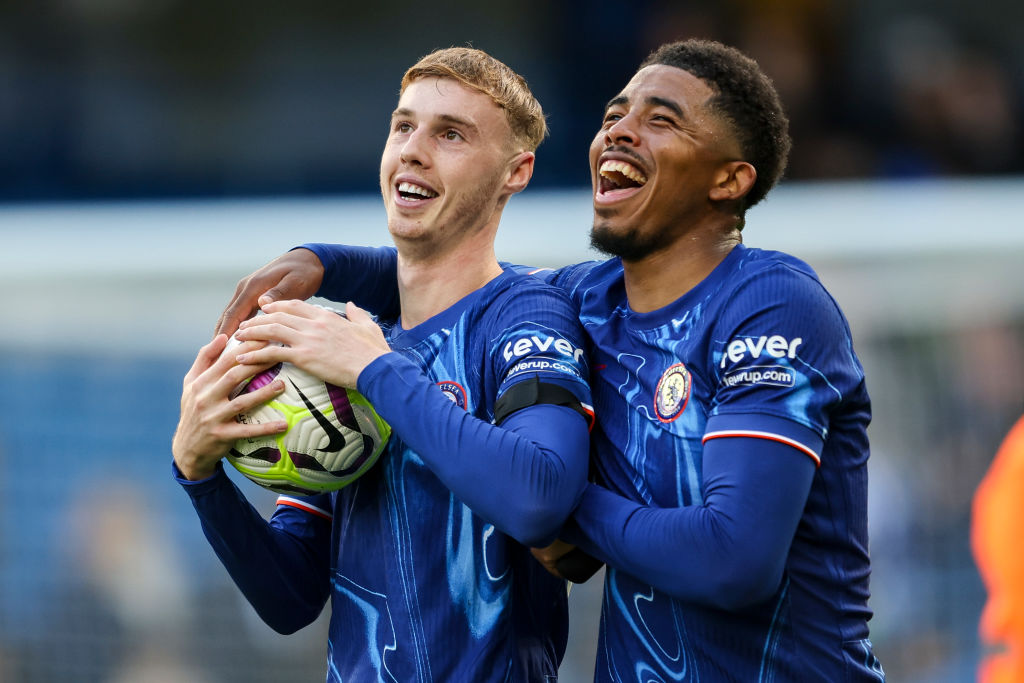FourFourTwo's 50 Biggest Derbies in the World: 40-31
Round two of FFT's countdown of football's biggest rivalries includes plenty of riot police, Barcelona (not that one) and the Eternal Derby...
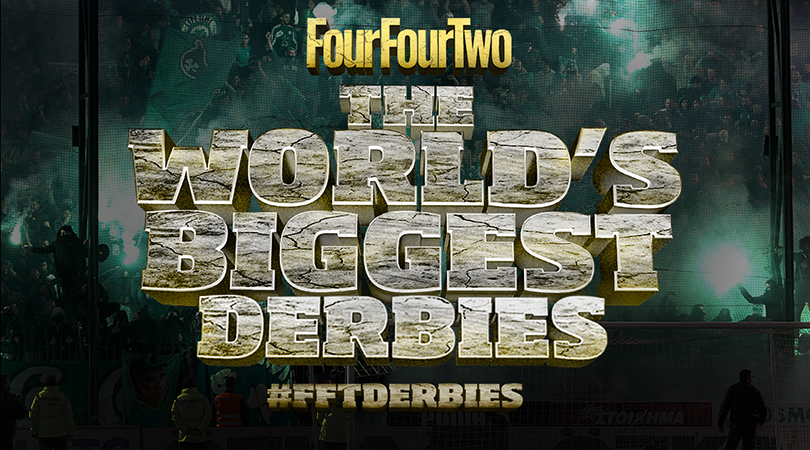
Words: Gary Parkinson and Chris Flanagan
#FFTderbies The 50 Biggest Derbies in the World: list and features here
40. America vs Deportivo Cali
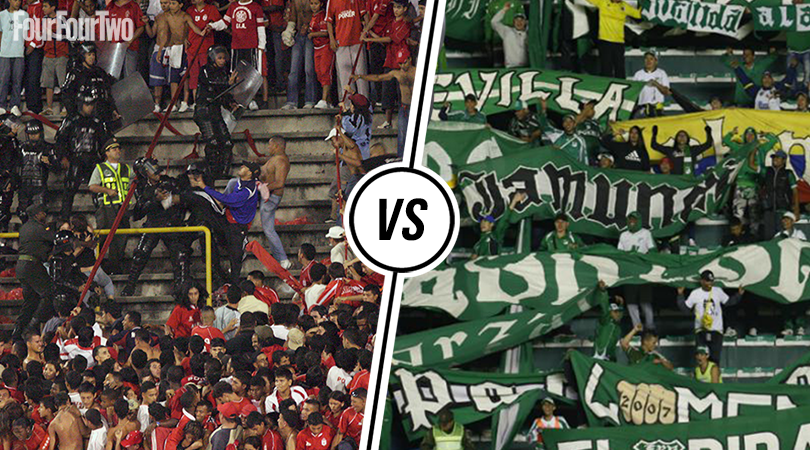
If you want to win a Copa Libertadores final, don’t come from the south-western Colombian city of Cali. Deportivo have lost both their finals, while neighbours America are South America’s footballing bridesmaids, losing all four of their finals – three in consecutive years from 1985 to 1987, the last in the final 10 seconds. Ouch. The pair have fared better domestically – Deportivo have nine titles and America 13, putting them third in the all-time Colombian rankings behind Atletico Nacional and Millonarios. And once America had been officially founded in 1927, it didn’t take long for this fixture to flare up.
Their first meeting took place in a 1931 cup final, Deportivo triumphing 1-0 after America had two goals disallowed. Los Diablos Rojos (you can probably guess at the translation) protested at the result, hitting back with… angry leaflets, circulated in the area. Somehow that angered Cali’s football authorities to such an extent that they gave the club a one-year suspension from local competitions. To get around the problem, America went on tour, becoming the first Colombian side to do so. And wanderlust became a tradition: in January 2016, the clubs played a pre-season friendly in Miami. It took just 17 minutes to produce a straight red card. CF
READ THIS: More Than A Game: America vs Deportivo Cali
39. Hamburg vs St. Pauli
Get FourFourTwo Newsletter
The best features, fun and footballing quizzes, straight to your inbox every week.
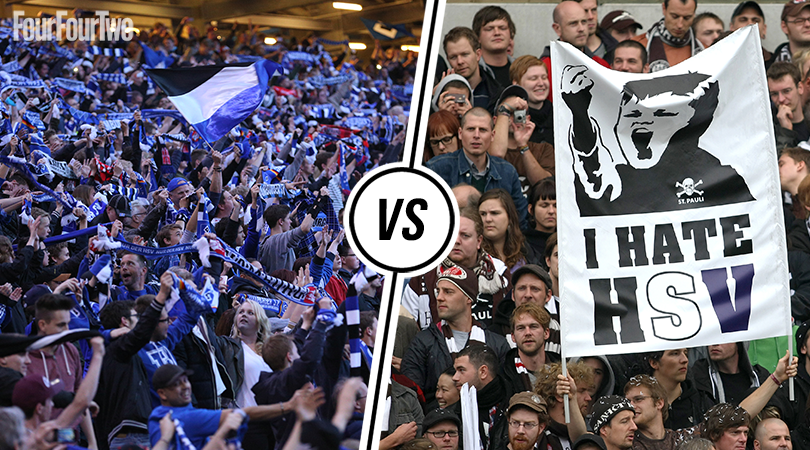
A bit of a weird one, this rivalry. Or rather, St. Pauli is a bit of a weird club, leaving Hamburger SV as the straight man to its kooky oddness. Either way, this is rated by German police as the most violent derby in German football. HSV is undoubtedly the bigger club – six national titles, five European finals and by far the better record in this derby – while St. Pauli became the original hipsters’ favorites, embracing rock music and the red-light district while cracking down on the nationalistic hooliganism that was blighting other German teams in the 1980s.
Although the teams haven’t always been on a level playing field, St. Pauli’s 1947 win in the Hamburg championship established an enmity that exists to this day. In 2011, HSV reseeded its pitch four days before the derby, which was subsequently postponed after torrential rain: cue mickey-taking from St. Pauli and an attack by HSV hooligans on a rival pub. At the rearranged match, which turned out to be St. Pauli’s first derby win in 34 years, riot police stormed and pepper-sprayed the away end. Just another quiet night in Hamburg… GP
FFT’s 100 Best Stadiums: Volksparkstadion • Millerntor
38. Alianza Lima vs Universitario
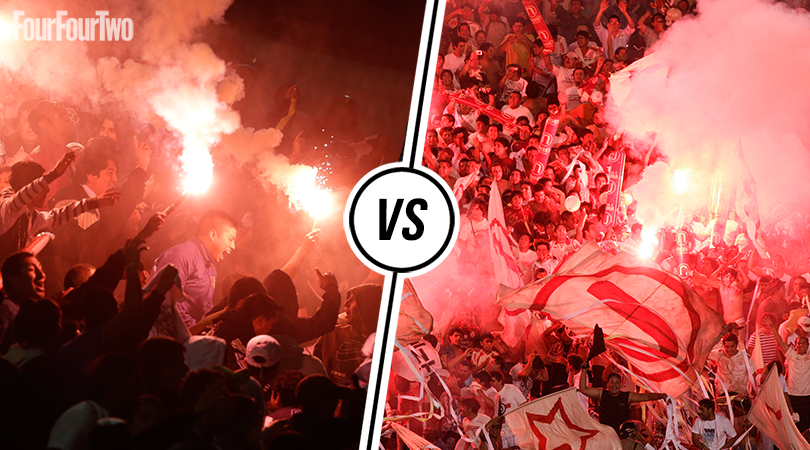
Meet the two most successful clubs in Peru. Formed in 1901 by workers from the local horse stud, Alianza has been champion 23 times, three fewer than its Lima neighbor Universitario (founded, as the name suggests, by students and professors at the National University of San Marcos, in 1924). The first Clasico in 1928 rather set the tone. Plucky upstarts Universitario went ahead, and established giant Alianza didn’t take it well, losing five players to red cards before the game was called off. Alianza supporters tried to storm the section housing Universitario fans, who responded by throwing canes, earning the match the moniker El Clasico de los Bastonazos (batons).
Universitario certainly have the bigger stadium: the brilliantly bonkers 80,000-capacity Estadio Monumental is more than twice the size of Alianza’s Estadio Alejandro Villanueva. One might think the death of the entire Alianza squad in a 1987 plane crash would calm the rivalry a tad, but no: the clubs met in the Copa Libertadores a year later and the tie had to be abandoned (again) after Alianza had three players dismissed and claimed two more needed to go off due to injury. But the most shocking incident occurred in 2011, when Universitario hooligans broke into an executive box at Monumental and hurled a 23-year-old Alianza fan to his death. CF
FFT's 100 Best Stadiums: Estadio Monumental
37. CSKA Sofia vs Levski Sofia
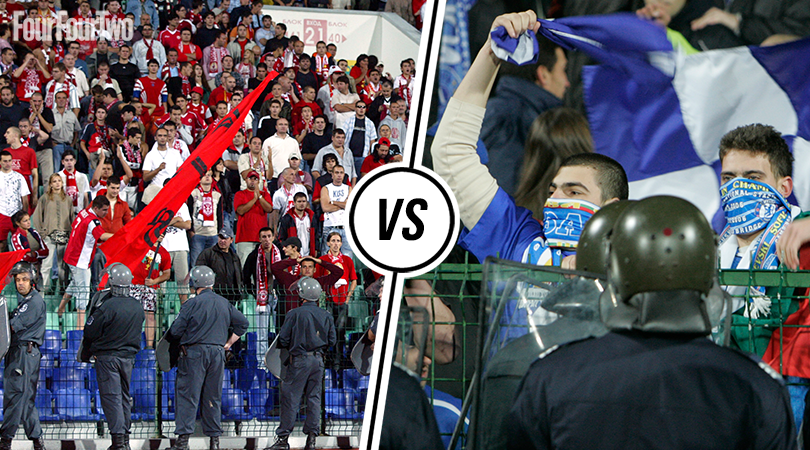
Contrary to its name, the Eternal Derby started later than most: although they have roots in an older army team, CSKA were only founded in 1948. Perhaps realising they were late to the party, the new outfit promptly set about dominating Bulgarian football (winning eight top-flight titles in the 1950s), but not without a fierce fight from older club Levski: over the next six decades CSKA won 31 league titles and Levski 26. Neither club has won the league since 2008, but that only makes the derbies more important to the success-starved fans.
The sides reached Peak Derby during the 1985 Bulgarian Cup final. In a game including a handled goal, two iffy penalties and two red cards, some of referee Asparuh Yasenov’s decisions were perhaps questionable; certainly Levski goalkeeper Bobby Mihailov was irked enough to twice hit the ref. CSKA won 2-1 but upon the final whistle, the ongoing scuffles morphed into a full-sized tear-up which lasted several minutes despite the attempted intervention of the handy Bulgarian police. The ruling Communist Party stepped in with typical subtlety, dissolving both clubs and handing life bans to five players including a teenage Hristo Stoichkov. The bans and disbanding were later overturned, while Mihailov – after a brief spell at Reading most notable for his dodgy hairpiece – later joined the big-wigs as president of the Bulgarian FA. GP
36. Cerro Porteno vs Olimpia
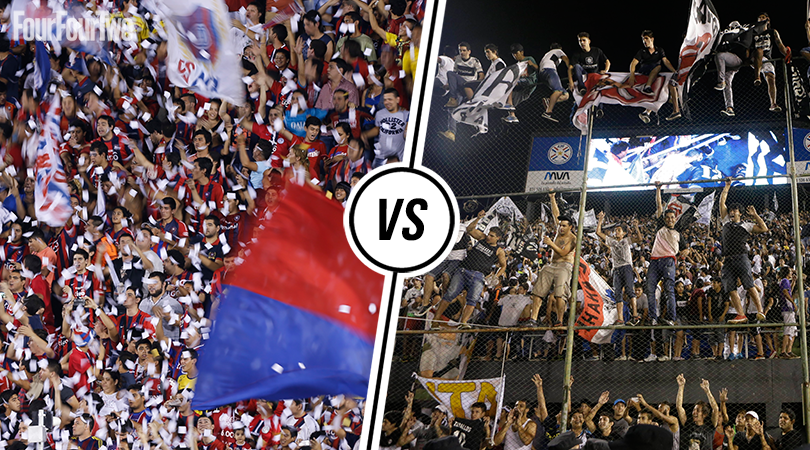
Nine out of 10 Paraguayan football fans support one or other of these teams from the capital, Asuncion. Olimpia was Paraguay’s first club, founded in 1902 by Dutchman William Paats and named after the Greek city of Olympia, and was originally associated with the elite. Cerro Porteno – named after a battlefield where the Paraguayans repelled the massed forces of Argentina in 1811, although that hasn’t stopped the club appointing several Argentine managers, including Tata Martino and Ossie Ardiles – is from the district of Obrero, which means ‘worker’, with most of the club’s fans coming from a humble background.
The first derby ended in farce when Olimpia didn’t turn up, and in 1969 Cerro Porteno’s Miguel Angel Sosa angered rival fans with some barefaced cheek, rounding the keeper and sitting on the ball before rolling it home. A derby clash in 2009 proved to be one to forget for Olimpia’s Dario Caballero: the ex-Cerro Porteno defender (traitor!) headed the only goal of the game into his own net, needed treatment for a head wound after being floored by a block of ice thrown from the crowd, and was one of five players sent off. CF
READ THIS: More Than A Game: Cerro Porteno vs Olimpia
35. Glentoran vs Linfield
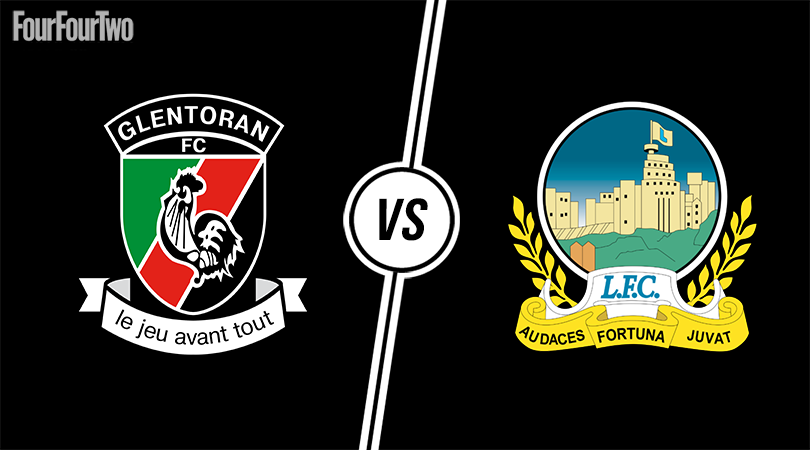
The game known as Belfast’s Big Two used to be Linfield versus Belfast Celtic, until the latter left the league in 1948 following a riot in which three of its players were injured, one with a broken leg. Having first faced Linfield in 1887, Glentoran replaced the Celts as its key foes. Although Linfield’s Windsor Park is in a Protestant area and some games have been marred by religious bigotry among some supporters, this isn’t a simple sectarian clash. Both sides are predominantly Protestant-supported, and despite accusations that Linfield secretly banned Catholics, each side has fielded players from various religious backgrounds.
In truth, the rivalry is more about success – Linfield has 52 league titles to Glentoran’s 23, with no other current club on more than seven – and geography, with Linfield in Country Antrim to the south of Belfast and Glentoran in County Down to the east. Competing since 1887, they traditionally meet on Boxing Day – unless the league bans it for fear of violence – and almost as regularly in cup finals: since 1960 they have clashed 43 times with silverware at stake. GP
34. Barcelona vs Emelec
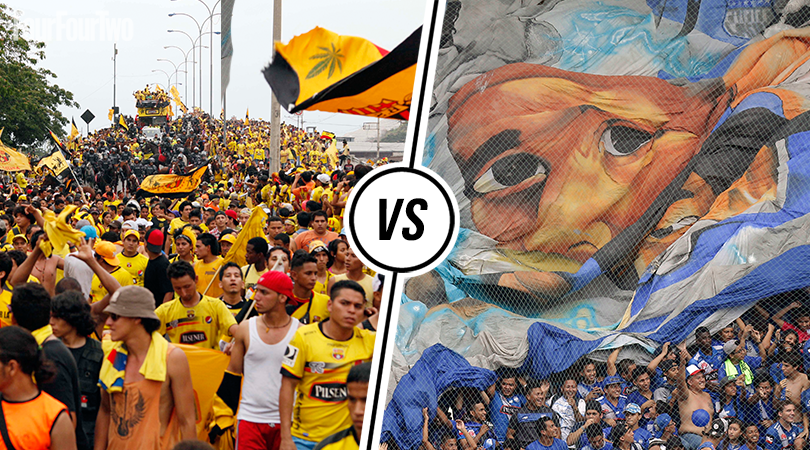
Pub-ammo fact: Barcelona has won more Serie A titles than Roma, Lazio or Napoli. That’s the Ecuadorian Serie A and the ‘other’ Barcelona, formed by a Spaniard in 1925 and now Ecuador’s most successful football club – although Emelec is only marginally behind it in terms of success, having claimed 14 league titles to Barcelona’s 15. Both are from Guayaquil, Ecuador’s main port city, which has a much higher population than capital Quito. Emelec play in a ground named after its founder, the American owner of the Monopoly-esque Ecuador Electric Company (i.e. Empresa Electrica del Ecuador, or ‘Emelec’ for short). So, naturally, their home is called El Estadio George Capwell. Catchy!
That background only stoked the controversy in 1949 when, with Barcelona 3-0 up at its greatest rials, the El Capwell floodlights mysteriously failed. The Ecuador Electric Company received no shortage of complaints as Emelec hit back to draw 3-3 when the power came back on. And there was more trouble at El Capwell in May 2006. Ten-man Emelec was leading 3-0 when Barcelona’s ultras struck a linesman with a piece of a sink torn from the stadium toilets, destroyed the terrace fencing and laid siege to the radio broadcast booths. With some fans running onto the pitch to escape the chaos, the match had to be suspended, and eventually finished behind closed doors a day later. Even that didn’t pass without drama: Emelec had two more players sent off as it clung onto its lead to scrape home 3-2. CF
FFT's 100 Best Stadiums: El Monumental Isidro Romero Carbo
33. Esteghlal vs Persepolis
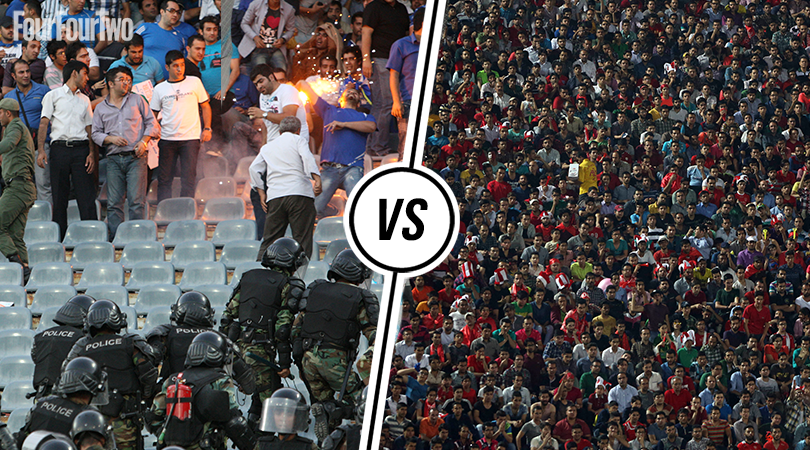
If you don’t think a game’s worth mentioning until there’s 50,000 people in the ground, you’ll love the Tehran derby. Iran’s two most successful teams both use the huge Azadi Stadium, and it’s usually packed to its 95,000 capacity for this clash. It’s a relatively young derby – Iranian football wasn’t organized into a national league until 1970, and the sides first bumped heads in 1968. During the ‘70s the rivalry became class-conscious, with Persepolis as the people’s club while Esteghlal – known as Taj until the 1979 Revolution – was seen as being supported by the elite.
In a noteworthy 1995 scrap, Persepolis were 2-0 up and sailing with 10 minutes left but a controversial penalty helped Esteghlal draw level. Such were the accusations of favoritism that the FA started to import foreign referees for improved impartiality – but it didn’t stop a 2000 brawl when needle between Esteghlal goalkeeper Parviz Broumand and Persepolis striker Payan Rafat led to the keeper whacking the forward in the face. The consequences – besides a black eye for Rafat – were post-match riots in which 250 buses were destroyed and 60 arrests made, including three players from each side. GP
READ THIS: More Than A Game: Esteghlal vs Persepolis
FFT's 100 Best Stadiums: Azadi Stadium
32. Dinamo Bucharest vs Steaua Bucharest
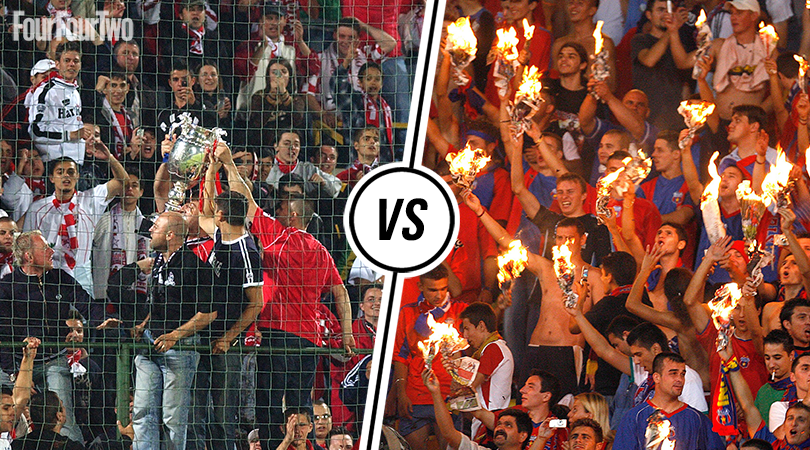
In the five seasons between 2007 and 2012, a curious thing happened: neither Dinamo nor Steaua won the league title, the first such five-year drought since the teams were both formed during the postwar Communist reconstruction of Romania. Steaua – or now known as FCSB, curiously – have since roared back to prominence, and now have 26 titles to Dinamo’s 18. The clubs dominated the Communist era; with a ban on players under the age of 28 from moving abroad, each club could build a strong team, with help from the state. Backed by the secret police, Dinamo reached the 1984 European Cup semis; two years later, Army club Steaua, with dictator Nicolae Ceaucescu’s son Valentin as general manager, was champion of Europe.
For a derby in 1985, 120,000 fans sardined into the national stadium; it’s said that players could barely take throw-ins, the crowd was packed so close. Things have changed a little since, but the hositility remains. In 1997, with their team losing 3-1 at Steaua’s old Ghencea stadium, Dinamo fans ignited petrol drums on the away end before understandably legging it.
In an unrelated move, Steaua relocated to the acoustically excellent new 55,000-seat Arena Nationala (Dinamo remains at its postwar bowl, the equally creatively named Stadionul Dinamo), but the potential for trouble remains: a 2015 derby was delayed for 18 minutes after a firework thrown from the Dinamo end struck the Steaua goalkeeper. GP
READ THIS: More Than A Game: Dinamo Bucharest vs Steaua Bucharest
FFT's 100 Best Stadiums: Arena Nationala
31. Kaizer Chiefs vs Orlando Pirates
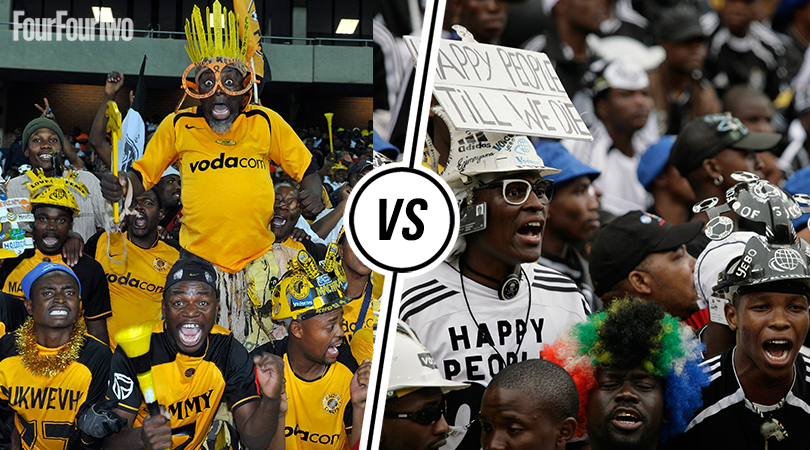
Soweto’s population is around 1.2m, but something like 30m follow its two biggest clubs. Formed in 1937 and named in honour of an Errol Flynn film, Orlando Pirates are one of Africa’s oldest clubs. Local lad Kaizer Motuang represented them for eight years before moving to the NASL’s Atlanta Chiefs; returning to find the Pirates in-fighting and four of his old team-mates expelled, he promptly set up the team that became Kaizer Chiefs. (A few years later, ex-Pirates player Jomo Sono did similar, returning from a spell with New York Cosmos to found Jomo Cosmos.)
The first derby was in 1970 and the clubs have been close rivals ever since, fighting not just for local superiority but national supremacy. Since the 1996 founding of the Premier Soccer League they have won four titles each, and although billionaire-backed Pretorian club Mamelodi Sundowns – known as the Chelsea of South African football – have won six, the two Soweto teams are easily the most popular clubs in southern Africa. Such is their pull that derbies have been staged in packed stadiums as far away as Durban (350 miles) and Port Elizabeth (650 miles, roughly London to Monaco).
Sadly, this popularity has proved disastrous. During a 1991 friendly at an overcrowded Oppenheimer Stadium, violent reaction to a controversial goal caused a stampede which killed 42 people. A decade later, up to 120,000 people were admitted to the 60,000-capacity Ellis Park, and the ensuing crush killed 43. GP
READ THIS: More Than A Game: Kaizer Chiefs vs Orlando Pirates
FFT's 50 Biggest Derbies in the World: 50-41 • 40-31 • 30-21 • 20-11 • 10 • 9 • 8 • 7 • 6 • 5 • 4 • 3 • 2 • 1
#FFTderbies The 50 Biggest Derbies in the World: list and features here
